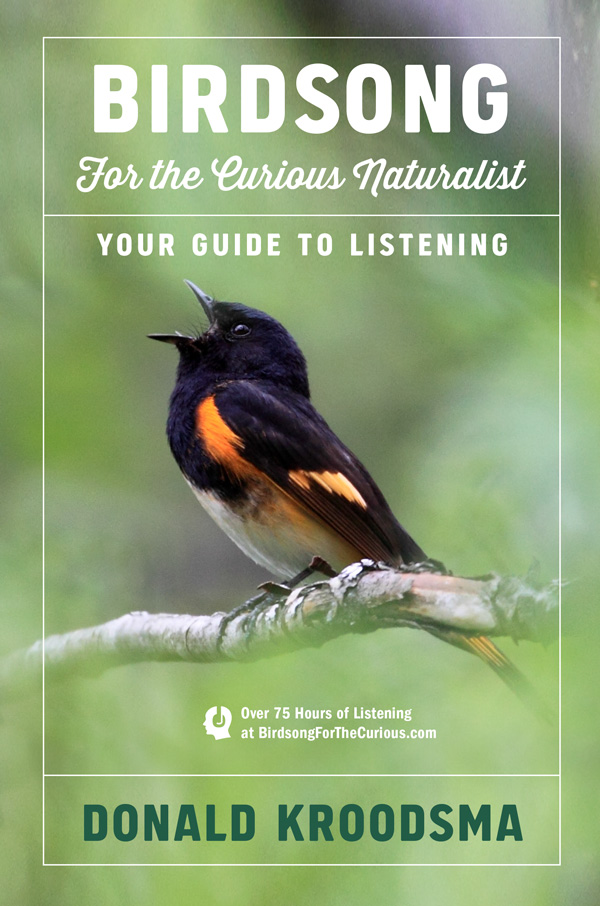35. Tuning your ears to hear mimicry.
5. More about Song Learning
Mimicry
From page 77 in the book.
Tuning your ears to hear mimicry. Recognizing mimicry is difficult for the beginner who has a limited ability to identify species by their songs or calls. One possibility is to find an expert birder at a local bird club and have him or her identify the mimicry with you. Another possibility is to learn to recognize the distinctive calls of a particular species, such as the wood thrush's whit-whit, and then listen for that specific call in the white-eyed vireo's song. Where in the song does it occur? Do vireos in south Florida have the whit calls in their songs, even though wood thrushes don't breed there? Or how often do starling songs begin with the asthmatic scream of a red-tailed hawk? Or, more challenging, can you solve the mystery of when and why jays mimic hawks (below)?
Do all mockingbirds in the neighborhood share the same mimicked songs? Is the mocker more likely to mimic, say, an eastern phoebe, if the phoebe is singing simultaneously nearby? I have often wondered if I could teach a mockingbird a song that I repeatedly played to it. I would choose some of their favorite songs as models, a western rock wren for an eastern mocker, an eastern Carolina wren for a western mocker, because then I would know for sure that I was the source of their mimicr—if, that is, they copied the songs I broadcasted into the neighborhood over my loudspeakers.
